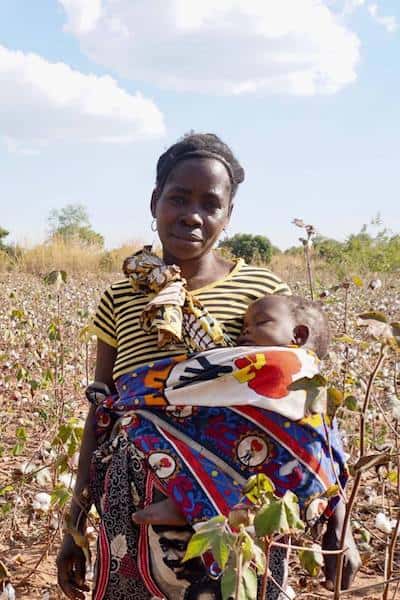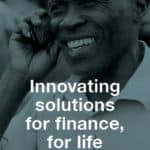Digital Isn’t Always the Answer: Building Choice into Financial Inclusion Solutions for Smallholder Farmers
Editor’s Note: This article was voted by readers as one of NextBillion’s Most Influential Articles of 2017.
Around the world, 500 million smallholder farmers feed and support 2 billion people. Like many in emerging markets, these farmers are highly susceptible to financial shocks – they frequently incur debt to buy high-yield inputs such as seeds and fertilizer, and their income is often irregular and unpredictable. Over the last year, our team has logged hundreds of hours listening to and collaborating with smallholder farmers in Mozambique to understand their financial behaviors, needs, aspirations and realities.
Uneven Adoption
Although more than half the adult population of Kenya uses payment technology like M-PESA, the use of mobile money elsewhere on the African continent is less widespread. In Mozambique, access to feature phones among smallholder farmers is far from universal and, even when the phones are available, many smallholder farmers do not have technology literacy. Increasing adoption and usage of mobile money and other digital payment systems becomes more complicated when access to the technology is limited in the first place. This scenario contrasts with another recent project in Uganda, where our researchers met smallholder farmers who both owned mobile phones and were adept at using mobile devices to perform financial tasks like repaying debt.
Context Should Inform Research Methods
Conducting research with smallholder farmers requires developing methods that are flexible and respond to their contexts. We’ve found that many farmers are uncomfortable in formal interview settings and hesitant to share their experiences in conversation with a researcher. So in Mozambique, we encouraged conversation by using visual activities like mapping and card-sorting to learn about farmers’ financial commitments, agriculture cycles and communities. Re-focusing attention away from direct eye contact and sustained conversation onto the paper-based activity allowed farmers who might otherwise be uncomfortable with these interviews to feel at ease and share their experiences more freely.
Smallholder farmers also have special physical needs; any screen-based solution must consider the fact that farmers spend most of the day in bright sunlight and their hands are usually large and rough, making feature phones – with their dim or reflective screens and small buttons – tricky to use.
Building the Ecosystem
Smallholder farmers often live in remote villages, located hours away from towns and cities where they might be able to access consistent mobile networks, bank accounts, or other formal financial access points. While many farmers are curious about the idea of receiving the payment for their cash crops in digital formats, the options for them to use that digital currency are limited in the rural places they live. A farmer who gets paid into a bank account may then have to travel three hours each way to cash out at an ATM or point-of-sale, and may not have local shops from which to purchase goods with a bank card. The challenge is not just to increase adoption among smallholder farmers, but also to consider the ecosystem necessary to make digital payments a viable, everyday solution.
Targeted Training is Key
No matter what financial inclusion program is developed, it’s crucial that smallholder farmers are given initial training and can receive ongoing assistance as needed. Well-timed, behaviorally informed training about new technologies (mobile phones, ATMs, point-of-sale devices, etc.), new financial products and services (savings, mobile money, etc.) and desired financial behaviors (investing in high-yield inputs, saving a portion of the harvest payout for difficult months, etc.) are more helpful than general financial education. Ideally, this training would be experience- and action-based such that farmers can begin to interact with and practice with the new products and services.
Design for Choice
Although the benefits of mobile money are frequently touted, it isn’t always the best solution. In fact, research shows that many people save more and spend less when handling physical cash. Barriers to the usage of mobile money are high for smallholder farmers, who live in rural areas with unreliable network coverage and are far from any agent who might be able to help them troubleshoot issues or cash-in/out. Instead of pushing technology for technology’s sake, financial inclusion projects ought to seek diverse solutions that are appropriate and accessible for customers based on their needs – which may mean providing a choice of cash modality (e.g. hard cash, mobile money and card-based solutions). Digital cash isn’t always the wisest choice, and context matters in determining the right solutions.
Looking ahead
Going forward, financial inclusion organizations will have to adapt their offerings as smartphones become increasingly affordable and penetrate emerging markets. Designing for that technology has its own set of challenges to consider. Whether organizations are designing for feature phones, smartphones or other delivery mechanisms, they will be successful only if they listen to, learn from and work with smallholder farmers to make contextually appropriate interventions that put farmers first.
Editor’s Note: This article was voted by readers as one of NextBillion’s Most Influential Articles of 2017.
Alexandra Fiorillo is the founder and principal at GRID Impact, a global research, innovation, and design firm that combines human-centered design with behavioral science to solve policy, program, and product challenges in the social impact space.
Photos courtesy of GRID Impact.
Homepage photo credit: Bioversity International/J.van de Gevel, via Flickr.
- Categories
- Agriculture




